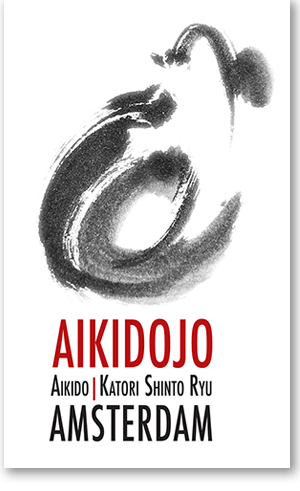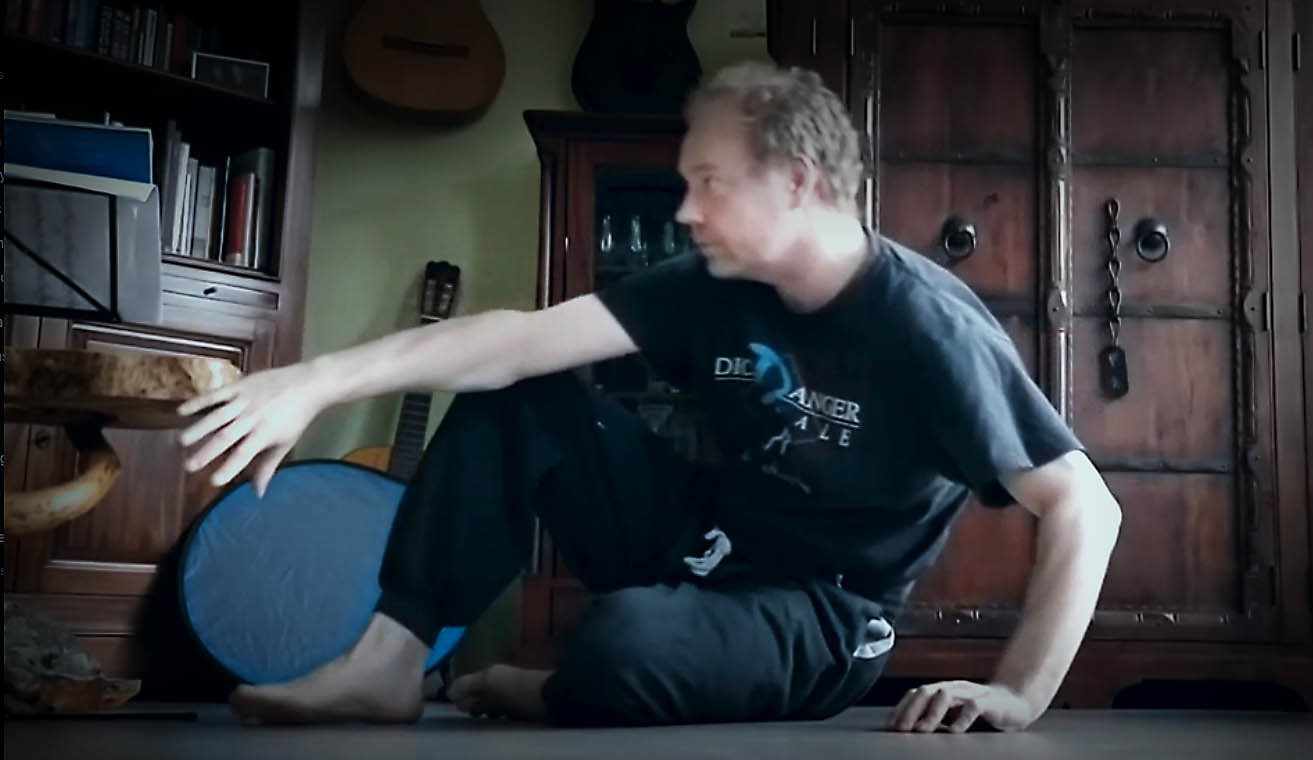Ukemi – by Dick Willems
Because of the Corona-virus control measures, there are no Aikido classes at Aikidojo Amsterdam the coming week. But does this mean you can’t train? Absolutely not! Although it’s often said it takes two to do Aikido, there are plenty of exercises you can do by yourself. Even though you’re not going to be able to lock up your training buddies for a while, there’s still plenty you can work on. It might even be a good idea to do this when we get back to our regular schedule!
The Japanese word “ukemi” literally means “receiving body”. In Aikido, we practice techniques by defining roles. Nage is the one who executes the technique, uke is the one who undergoes (receives) the technique. This means that in your typical Aikido practice, about half of what you do is ukemi. So if your ukemi is good, you’re well on your way to being a good Aikidoka.
“Ukemi” is usually used as an umbrella term, consisting of breakfall and rolling techniques, ways of attacking, responding to locks and throws, and more generally as an attitude to training or, if you’re spiritually inclined, to life, the universe and everything. Since we’re focusing on training without a partner and I’m not feeling all that spiritual, in this entry I’ll write a bit about rolling. This doesn’t mean these other aspects are unimportant! We’ll leave the them for another time.
There are plenty of instructional videos on rolling on YouTube, so instead of writing about rolling techniques, I’m going to discuss some finer points. If you have a mat, some grass or an otherwise forgiving surface to practice on, you can do high-speed rolling for cardio, otherwise I suggest you practice slowly to improve your rolling technique. Since only few people practice slow rolling, I’ve included a short video later in this entry. But if possible, mix them up: slow rolls for technique, high-speed rolls for cardio. It’s important to keep in shape in these times!
Here are some things to consider while practicing:
Exhale
When rolling or breakfalling, make sure you exhale. This is both to help you reduce tightness (see below) and to protect your lungs. If you hold your breath during a fall, the air in your lungs has nowhere to go and might rupture the blood vessels within your lungs.
This also helps you reduce the impact on your body. Imagine someone jumping off a roof onto an air pillow. If the air pillow has holes in it to let out the air, the pillow will deflate on impact, protecting both the jumping person and the pillow. If it doesn’t have holes, the impact might either tear the pillow or bounce the jumping person off to a second fall.
Keep extension throughout your body
Many people, except for the exceptionally talented, have the experience of messing up a forward roll due to tightening the muscles. Since people tend to be averse to falling (which is natural), the prospect of falling tends to make them nervous, which results in muscle contraction. This results in blocky, painful falls.
You should also not relax too much, because then your fall will probably do some damage to your spine and joints. Your muscles shouldn’t feel like spaghetti. There should be a bouncy quality to them. To achieve this, rather than thinking of relaxing during your roll, think of expanding.
This will also keep the load off of your shoulder. Many people tend to take the impact for the fall on their elbow, which means the shoulder joint has to soak up a lot of force. This can lead to injury! Getting into the habit of “feeling big” during a roll can prevent this.
Protect the head and spine
A key function of ukemi is that it should help you protect your body during a fall. We usually practice ukemi on mats, but your ukemi should also work on concrete. It’s instructive to keep in mind when practicing rolling.
Try to avoid letting the head touch the mat or rolling over the spine. This is the reason why we roll from shoulder to hip in Aikido, as is demonstrated in the following clip :
The entire movement is a roll
This might seem like a silly statement, but an observation I’ve made in teaching is that many people wait too long to start rolling. The moment you make contact with the floor, you should already be turning around your center.
Sometimes people use their hands as “vaulting poles”; they plant their hand on the mat and “keel over” into the roll. In aikido we usually have some horizontal air-time before this becomes a roll, this is what lets us get away with that. But suppose the trajectory would be steeper (as it is with throws from other martial arts). You would hit floor pretty hard, probably damaging your shoulder area and everything around it. If you start the roll earlier, the rotation will disperse the force to some extent. To be clear, you’ll also want to increase the area of impact (by slapping the mat) in these cases. But since the current topic is rolling, I’m not going to get into that.
So how do you start the roll early? By trying to reach back while you roll forward. In other words, image that the arm that you are rolling over is trying to grab something behind your rear foot. But you can’t reach it because your arm is too short. So you turn your body to be able to reach a bit further, and let that movement turn your body into the roll. So by reaching behind you with your arm, you cause your legs to come over to the front.
Slow rolls
This is an exercise you can do at home, even if you don’t have a mat. Basically what you’re trying to do is roll as slow as possible. It works best from a seated position, because you don’t have to deal with handling the momentum. Here’s a short clip of me taking a crack at this.
If you do this exercise, as noted above:
- Keep breathing throughout the roll. You can take multiple breaths, it doesn’t need to be a single exhalation.
- Make yourself big, don’t tighten up or collapse.
- Roll from shoulder to hip.
- Start by reaching behind you.
Something specific for this exercise: if you do this for the first time, you’ll probably collapse when your feet are descending. You can mitigate this by using your free hand as support. So if you’re rolling over your right shoulder, use your left arm as support.
It looks easy, but it isn’t. Once you can do this, you can pay more attention to the points mentioned above, or even come up with your own points of attention. Practicing slowly regularly is a pretty good idea, and not only for rolling. It gives you the opportunity to correct things that you mess up when practicing at speed. Slow is smooth, and smooth is fast.
That’s it for this entry. See you back on the mat in good health soon, after this is all over. Wash your hands, stay inside if you can and if you can’t, maintain 1.5 meters distance. Take care!

